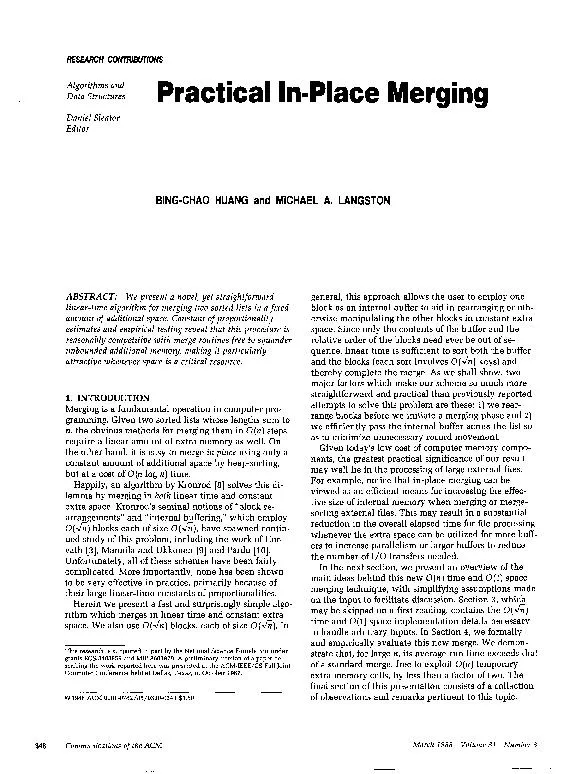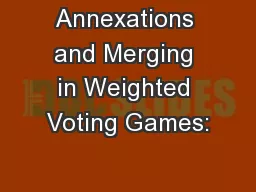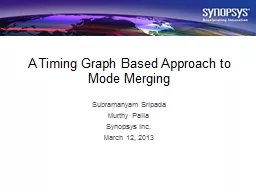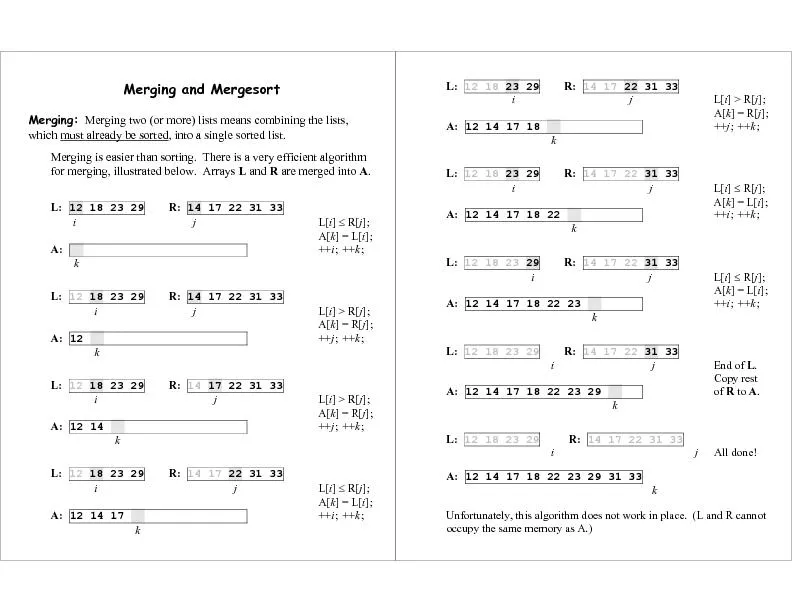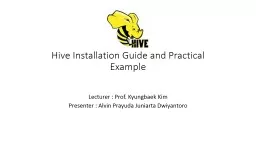PDF-Practical In-Place Merging
Author : tatyana-admore | Published Date : 2016-06-26
Daniel Sleator Editor BINGCHAO HUANG and MICHAEL A LANGSTON ABSTRACT We present a novel yet straightfotward lineartime algorithm for merging two sorted lists in
Presentation Embed Code
Download Presentation
Download Presentation The PPT/PDF document "Practical In-Place Merging" is the property of its rightful owner. Permission is granted to download and print the materials on this website for personal, non-commercial use only, and to display it on your personal computer provided you do not modify the materials and that you retain all copyright notices contained in the materials. By downloading content from our website, you accept the terms of this agreement.
Practical In-Place Merging: Transcript
Download Rules Of Document
"Practical In-Place Merging"The content belongs to its owner. You may download and print it for personal use, without modification, and keep all copyright notices. By downloading, you agree to these terms.
Related Documents

